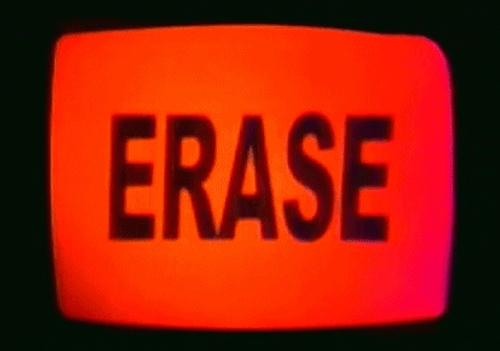09/13/24: We
by Yevgeny Zamyatin, 1924.




Weeks after finishing We by Yevgeny Zamyatin (1924), I’m finally getting to the review, and honestly for such a wonderful book, I’m not exactly sure what to say. So I’ll just let it flow. We is the earliest in the iconic ~dystopian-totalitarian society science fiction~ trio, alongside Brave New World (rereading now) and 1984 (sitting sadly on my bookshelf).
I’m really bad at summarizing books, so here’s the blurb if you’re interested, or just keep on reading the review:
In the One State of the great Benefactor, there are no individuals, only numbers. Life is an ongoing process of mathematical precision, a perfectly balanced equation. Primitive passions and instincts have been subdued. Even nature has been defeated, banished behind the Green Wall. But one frontier remains: outer space. Now, with the creation of the spaceship Integral, that frontier — will be subjugated to the beneficent yoke of reason.
One number, D-503, chief architect of the Integral, decides to record his thoughts in the final days before the launch for the benefit of less advanced societies. But a chance meeting with the beautiful I-330 results in an unexpected discovery that threatens everything D-503 believes about himself and the One State. The discovery — or rediscovery — of inner space... and that disease the ancients called the soul.
My dad kept mentioning it while we were on vacation and it inspired me to dig up a pdf copy online, and goddamn am I glad I did! Fate treated me to the 1972 Mirra Ginsburg translation, and it was really cool to see the ways the English and Russian languages were played around with in this book — granted, it was sometimes hard to follow, but it created an incredible sense of jagged, rushed panic blanketed in an authoritarian sense of calm, the ink of insanity held back by a dam made of perfect translucent glass.
Over the course of the book, you get to watch the main character switch so dramatically between “sane” (soulless, a number, a cog precisely engineered to fit into an ever-static, lifeless system), and “sick” (immersed so dramatically in the realization that something is wrong, that this isn’t how things are meant to be, that we used to not only be happy but angry, miserable, ecstatic, soulful, heartbroken, in love!), over and over and over. If you’ve read my other reviews, you should know by now that I’m a pretty hardcore Metaphysics of Quality buff, and this description undeniably fits into Pirsig’s interpretation of insanity, where the reality you’re experiencing no longer fits with the static patterns that surround you. Doesn’t necessarily mean what you’re seeing isn’t real — perhaps you’re simply starting to see things that others can’t (or are conditioned not to) see. As Zamyatin puts it in We, “‘My dear, you don’t look normal, you look sick — for abnormality and sickness are the same thing.’” D responds to the speaker “in absurd, confused, flooded words [to] tell her that I am a crystal, and therefore there is a door in me, and therefore I feel the happiness of the chair she sits in. But the words are so nonsensical that I stop, ashamed” (p. 131-132). Circled and starred, I scribbled next to this paragraph, “this is so schizo,” in the most affirming way possible! Because he’s right!!!
Hell, the majority of my notes are just from parts in the book that jumped out to me as fitting into a MOQ view of the world in a frighteningly spot-on way. On page 165, Zamyatin gives basically a word-for-word description of static and Dynamic Quality, 67 years before Pirsig’s Lila was published: “There are two forces in the world — entropy and energy. One leads to blissful quietude, to happy equilibrium; the other, to destruction of equilibrium, to tormentingly endless movement.” Like, come on. Earlier in the book, taken directly from Zamyatin’s essay On Literature, Revolution, Entropy and Other Matters, the universal idea of Dynamic Quality is expressed as the concept “revolution,” and static patterns as “calcification”:
“Revolution is everywhere, in everything. It is infinite. There is no final revolution, no final number. The social revolution is only one of an infinite number of numbers. The law of revolution is not a social law, but an immeasurably greater one. It is a cosmic, universal law — like the laws of the conservation of energy and the dissipation of energy (entropy)[...] Harmful literature is more useful than useful literature, for it is antientropic, it is a means of combating calcification…” (p. x).
Kinda bold to put this out there (and honestly based on very little detailed research, I’m no Kremlinologist), but I’ve recently wondered if one of the big problems with authoritarian socialism is its reliance on unchanging, static systems. If things are stable, controlled by a small number of people, and all entropy (Dynamic Quality, the force that brings destruction and change and growth and evolution) is removed from the equation, then perhaps we can stay still long enough for the tendrils of the State to work its way into every crack, every apartment, to perfectly solve every problem. Utopia. But these types of systems are too rigid, they cannot account for internal and external Dynamic forces pushing and pulling on a scaffolding made of graphite, and eventually they must break. A super-computer (say, your iPhone) is filled with miniscule, perfectly aligned wires and chips and parts that functions flawlessly — until one little piece stops working the way it should, and it all collapses into useless junk. Sure, capitalism has its capital-I Issues, but you can’t deny that it’s extremely Dynamic and flexible, which I think is a big reason why it’s been able to stick around so long and continue growing (growing infinitely… at what point does progress become immoral?).
One way Dynamic Quality touches humans is through art — paintings and plays, literature and poetry. In both Zamyatin’s book and in his real life, this was one aspect where the Benefactor’s smothering hand was absolutely relentless. D-503 wrote poems for those that ruled him, constantly praising and worshiping and repeating. Art had lost all Dynamic Quality and became another static system, perpetuating that which is already acceptable in order to reinforce the collective mindset that holds it all together. Finally, art has a purpose! This part of the story is clearly derived from Zamyatin’s own life experiences, where he had to watch in real time his friends and peers caved to the pressures of the Soviet regime to adapt their art to one of unanimous support for the Party, to turn poetry into a civic service. But as Lev Lunts, fellow author and friend of Zamyatin, states in his manifesto, “...We reject utilitarianism. We do not write for the sake of propaganda. Art is as real as life itself, and, as life itself, it has no goal or meaning, it exists because it must exist” (p. ix). Zamyatin, too, staunchly rejected submission to the demands of the State, and was forced to flee Russia and settle in Paris. A story almost as fantastical and miserable as the book he wrote — but at least he was able to escape.
Anyway, not calling myself a capitalist, but it is fun to think about, lol. More of an anti-authoritarian stance than anything, but I’ll wrap it up now. Human beings are the most Dynamic creatures on this planet — how could you ever expect to trap them into a system devoid of this most moral of forces? One screw will always come loose, and make the whole thing shake itself into utter destruction every time. You need something to account for that inevitable imbalance of simply being alive.
|


















